Interpretive, Interpersonal, and Presentational Modes of Communication
Address the reflection exercises in each of the following sections. For each section, you will need to embed portions of these assignments and activities as artifacts to substantiate your reflection. Then, at the end of each section, include a link to the document or embed it as a PDF.
Tutorials are available:
- Embedding a PDF
- Embedding Media (Images, Audio)
- Embedding a Video
An Effective Reflection Is
- Written in English.
- A demonstration, explanation, comparison of skill and growth described through what you learned and the challenges you had in that learning while highlighting your best work.
- A discussion of how you overcame any weakness or obstacles. Explain what you mean.
- Supported by evidence as represented by your artifacts (course materials, photographs, video, conversations, projects, news reports, authentic materials, etc.).
- Specific, addressing particular strengths, weakness, skills, transformative experiences, etc., avoiding vague generalizations (ex: “I learned a lot.”).
An Effective Reflection is not
- Only sharing an artifact without context or discussion.
- Only a description or explanation of an artifact. Focus on your learning and growth as a result of having completed that experience.
- An attempt to justify your work to an instructor. Instead, think more broadly about future audiences that might benefit from seeing evidence of your work and the skills you are developing.
Artifacts
A good artifact is a portion or clip of an assignment. It needs to be carefully selected to provide evidence/proof that supports what you are saying in your reflection.
Your reflection will help you determine what that will be. It is a quest for quality. It will represent you academically and professionally, and have personal meaning. It can be written, audio, or video.
At the end, ask yourself if the artifacts best demonstrates your abilities and growth over time.
At the end of your reflection in each section, link or embed the assignment/artifact. If the assignment has multiple pages and seems to overwhelm the section, consider adding just the first page and offering to provide the rest upon request.
Instructions
Exploring Culture
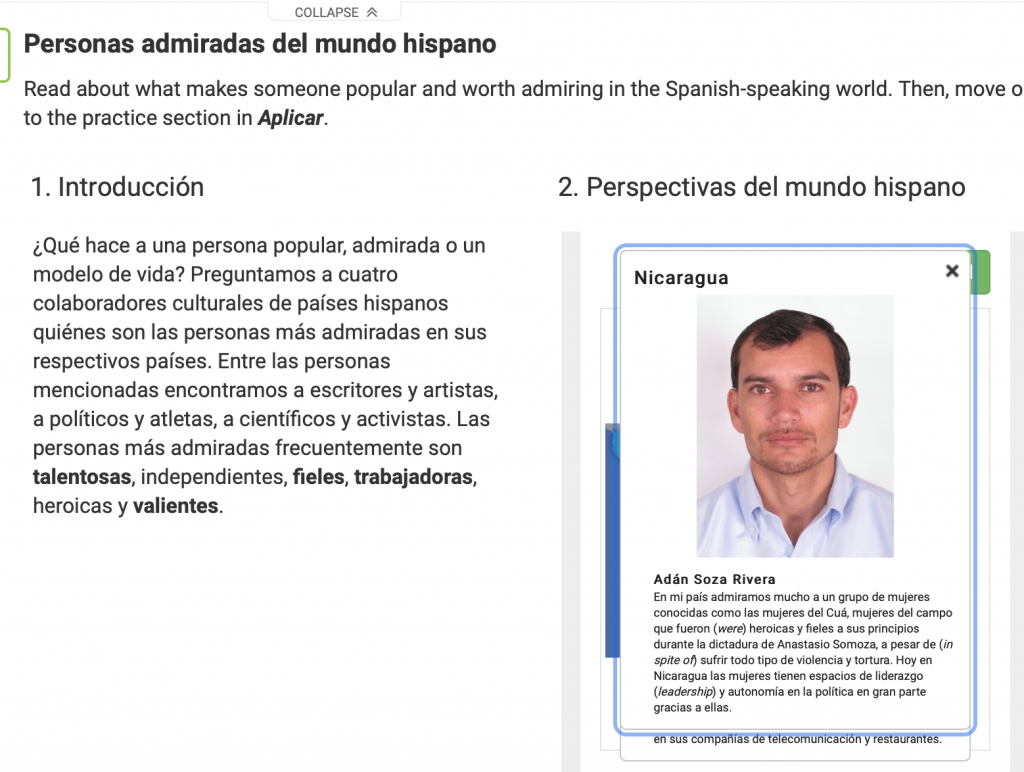
During class we look at many different readings that include different cultural aspects of Spanish speaking countries. We learn about different Spanish speaking countries and how they differ from each other. We then compare that to our own lives and how we live and determine what we do as similar or different.
Engaging in Communities
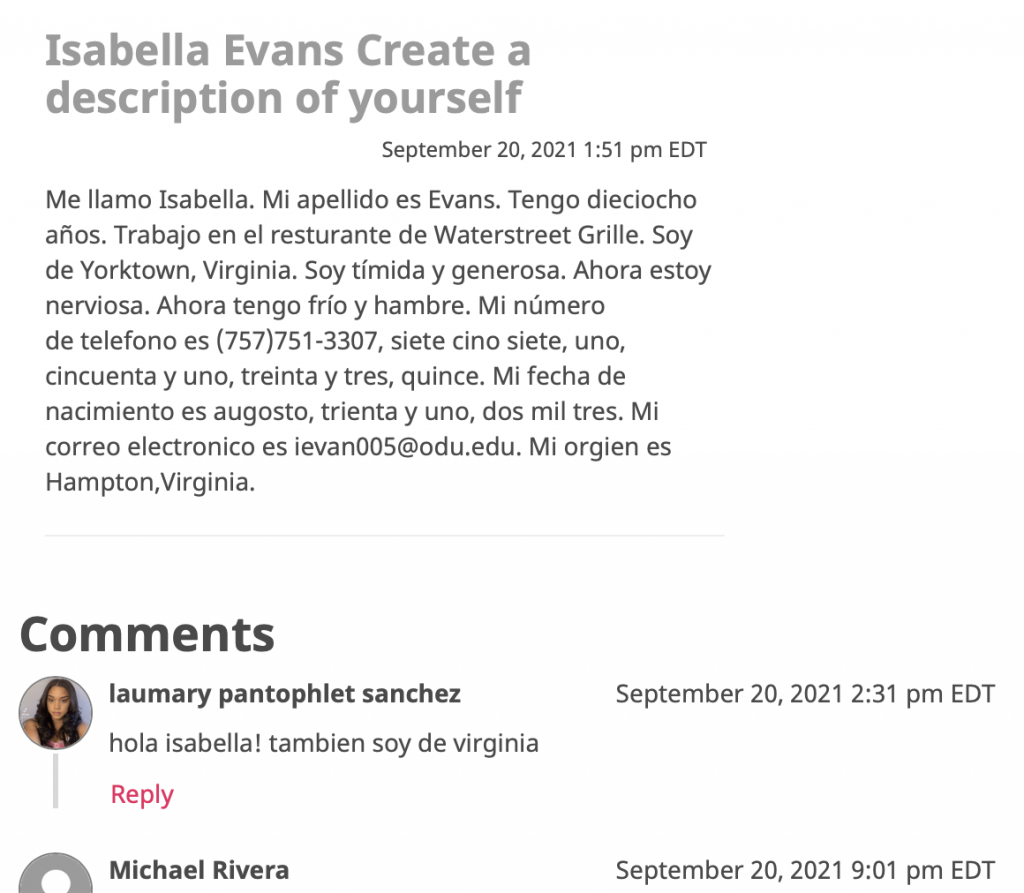
Due to covid it has been hard to socialize in our communities, but through out the semester in Spanish we each have learn about each other and our own communities. We have done online projects speaking to fluent Spanish speakers from. Specifically I did an interview with someone from a Spanish community.
Interpersonal Communication
.
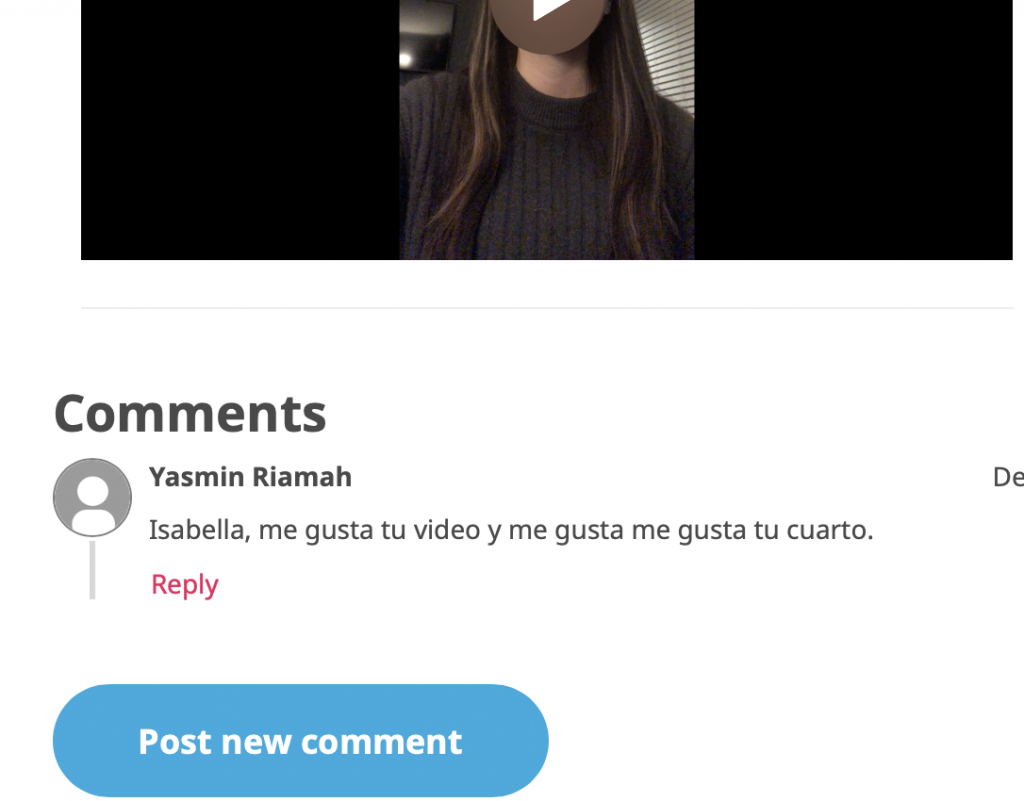
While doing projects we often use interpersonal communication via the internet. We often write comments on each others posts and give good advice. This helps us better our communications in class and out of class. We learn more about each other while bettering our skills as Spanish speakers.
Presentational Speaking
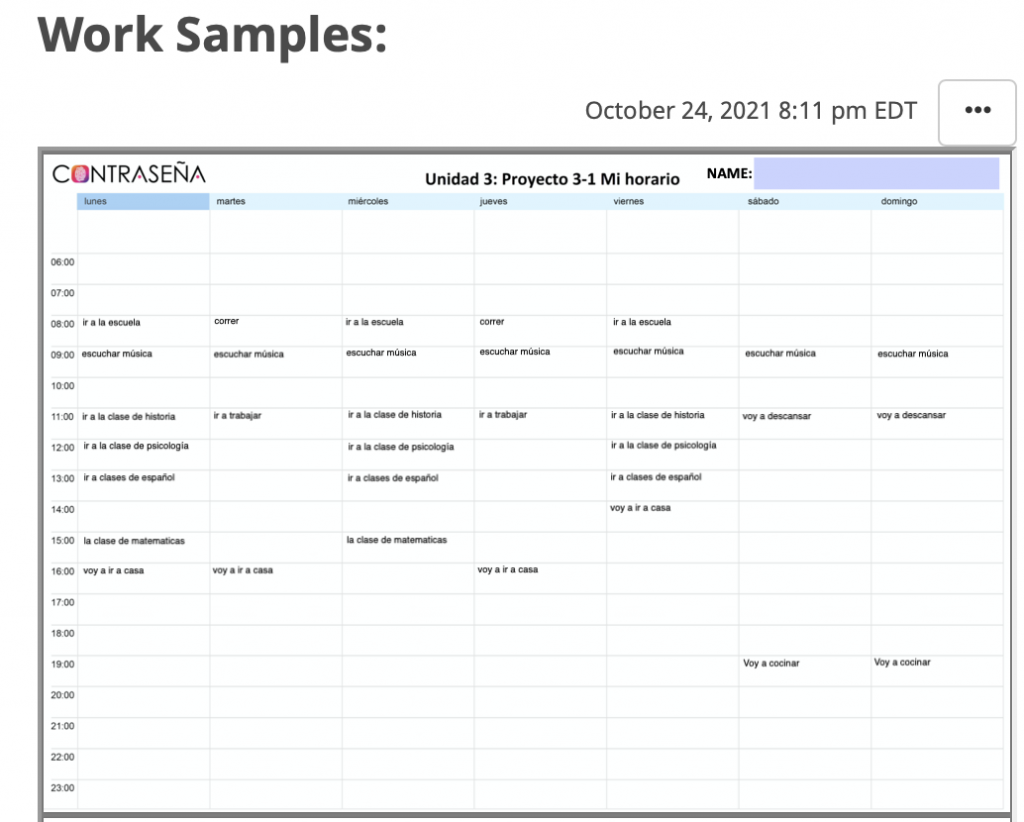
While in this class, we often present our projects we complete after each unit. We offer questions and responses during these presentations. Presenting these projects is very helpful when learning helpful insight of what other students know or might not know. We are able to speak and understand while listening and presenting. This is a helpful strategy when learning how to be novice Spanish speakers.
Presentational Writing
.
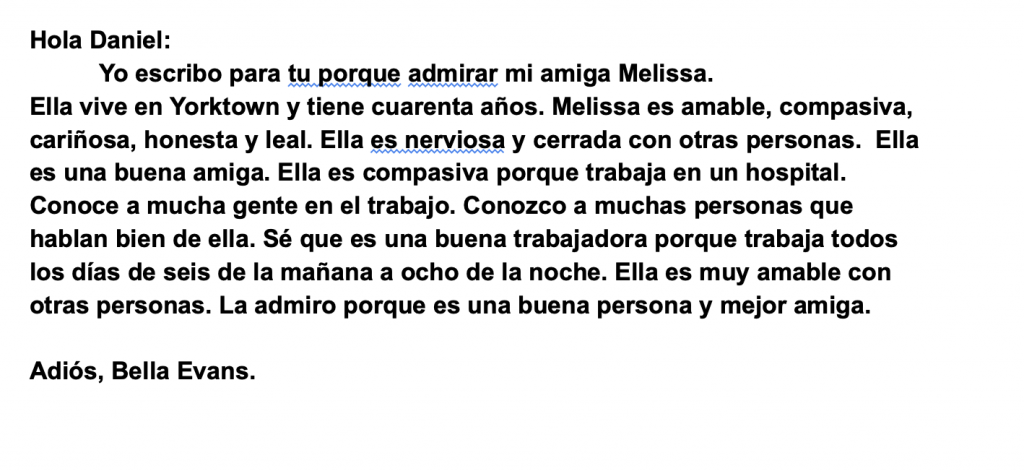
In our final project we were told to write a letter about a person we admire. This project helped me improve my writing and describing people using adjectives. This project was a big help in getting prepared for the writing portion of my exam. I feel like through out this course and how much time we spent typing, has readied me to pass the final exam.
Interpretive Listening
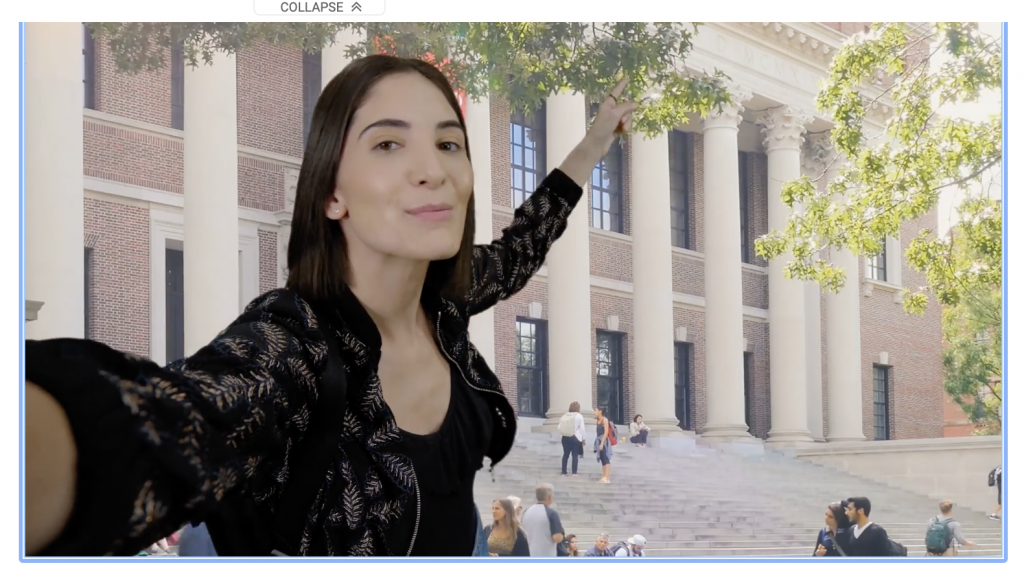
During the semester we have many videos we watch to understand Spanish. We use these videos in our lessons to listen to how words are pronounced, or fluently spoken. We also listen to videos that explain the basics of Spanish including when to use accent marks, how to conjugate verbs, and just learning any words we’d need in basic conversations.
Interpretive Reading
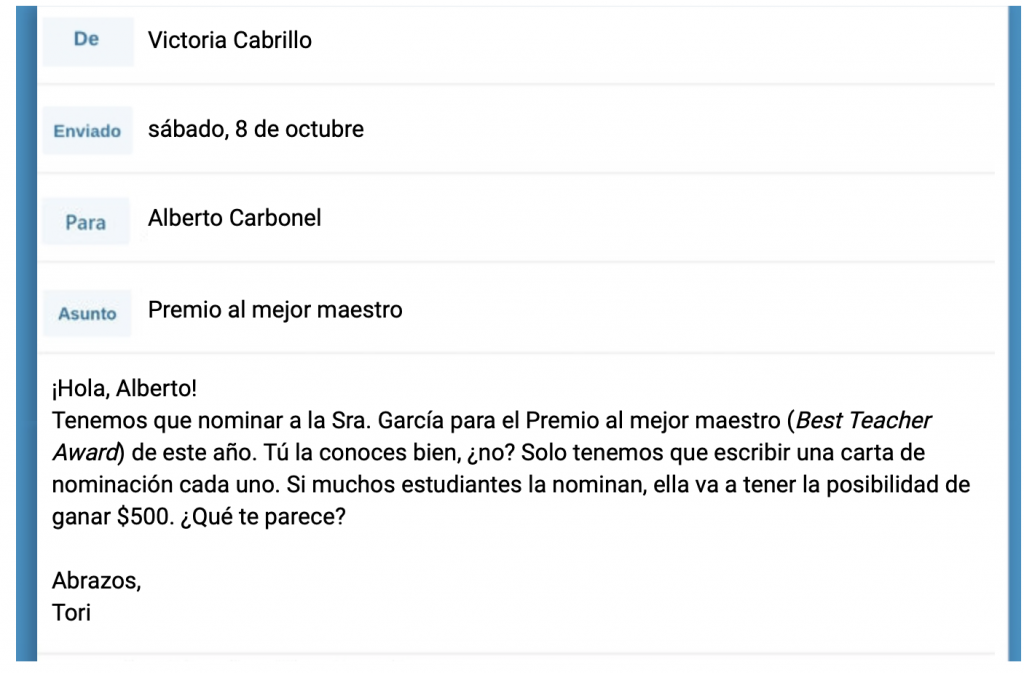
In our class we read many stories in Spanish. Our last unit we read a few nomination letters, we’ve also read about admirable people in the Spanish speaking world. These readings have helped us write better and read better Spanish. We’ve learned about people who have done great things for Spanish speaking countries.
When you have finished adding content to this page, delete all the instructions except the link to the Modes of Communication.
When you have finished adding content to this page, delete all the instructions except the link to the Modes of Communication.